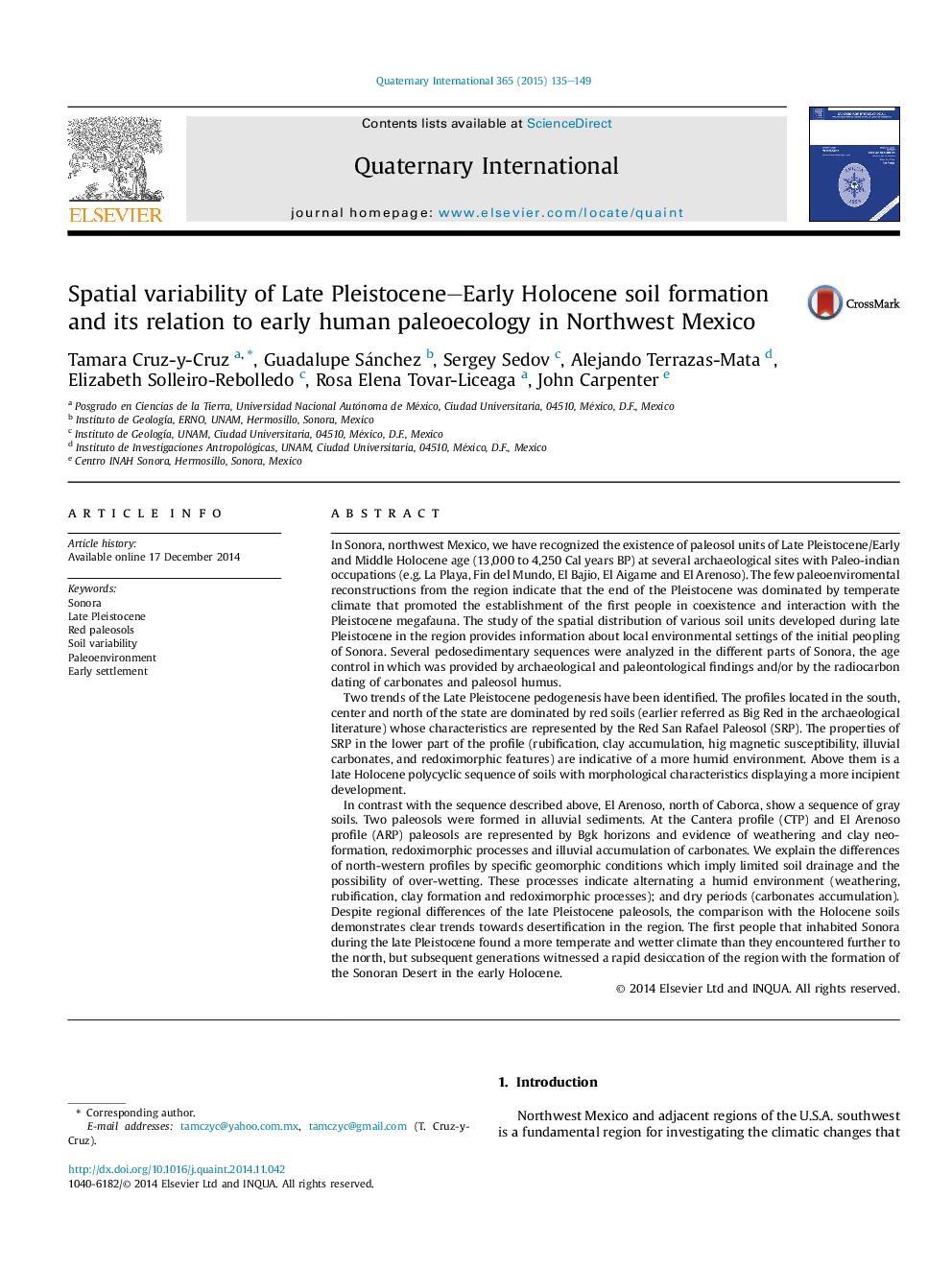| Article ID | Journal | Published Year | Pages | File Type |
|---|---|---|---|---|
| 1040908 | Quaternary International | 2015 | 15 Pages |
In Sonora, northwest Mexico, we have recognized the existence of paleosol units of Late Pleistocene/Early and Middle Holocene age (13,000 to 4,250 Cal years BP) at several archaeological sites with Paleo-indian occupations (e.g. La Playa, Fin del Mundo, El Bajio, El Aigame and El Arenoso). The few paleoenviromental reconstructions from the region indicate that the end of the Pleistocene was dominated by temperate climate that promoted the establishment of the first people in coexistence and interaction with the Pleistocene megafauna. The study of the spatial distribution of various soil units developed during late Pleistocene in the region provides information about local environmental settings of the initial peopling of Sonora. Several pedosedimentary sequences were analyzed in the different parts of Sonora, the age control in which was provided by archaeological and paleontological findings and/or by the radiocarbon dating of carbonates and paleosol humus.Two trends of the Late Pleistocene pedogenesis have been identified. The profiles located in the south, center and north of the state are dominated by red soils (earlier referred as Big Red in the archaeological literature) whose characteristics are represented by the Red San Rafael Paleosol (SRP). The properties of SRP in the lower part of the profile (rubification, clay accumulation, hig magnetic susceptibility, illuvial carbonates, and redoximorphic features) are indicative of a more humid environment. Above them is a late Holocene polycyclic sequence of soils with morphological characteristics displaying a more incipient development.In contrast with the sequence described above, El Arenoso, north of Caborca, show a sequence of gray soils. Two paleosols were formed in alluvial sediments. At the Cantera profile (CTP) and El Arenoso profile (ARP) paleosols are represented by Bgk horizons and evidence of weathering and clay neoformation, redoximorphic processes and illuvial accumulation of carbonates. We explain the differences of north-western profiles by specific geomorphic conditions which imply limited soil drainage and the possibility of over-wetting. These processes indicate alternating a humid environment (weathering, rubification, clay formation and redoximorphic processes); and dry periods (carbonates accumulation). Despite regional differences of the late Pleistocene paleosols, the comparison with the Holocene soils demonstrates clear trends towards desertification in the region. The first people that inhabited Sonora during the late Pleistocene found a more temperate and wetter climate than they encountered further to the north, but subsequent generations witnessed a rapid desiccation of the region with the formation of the Sonoran Desert in the early Holocene.
